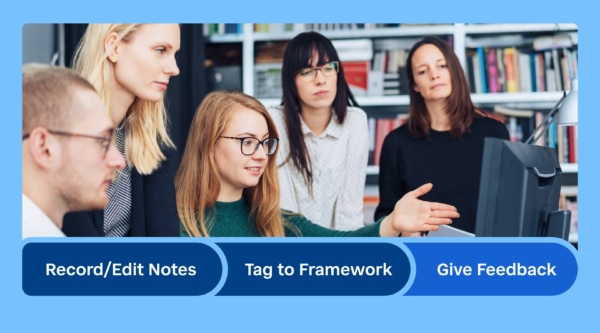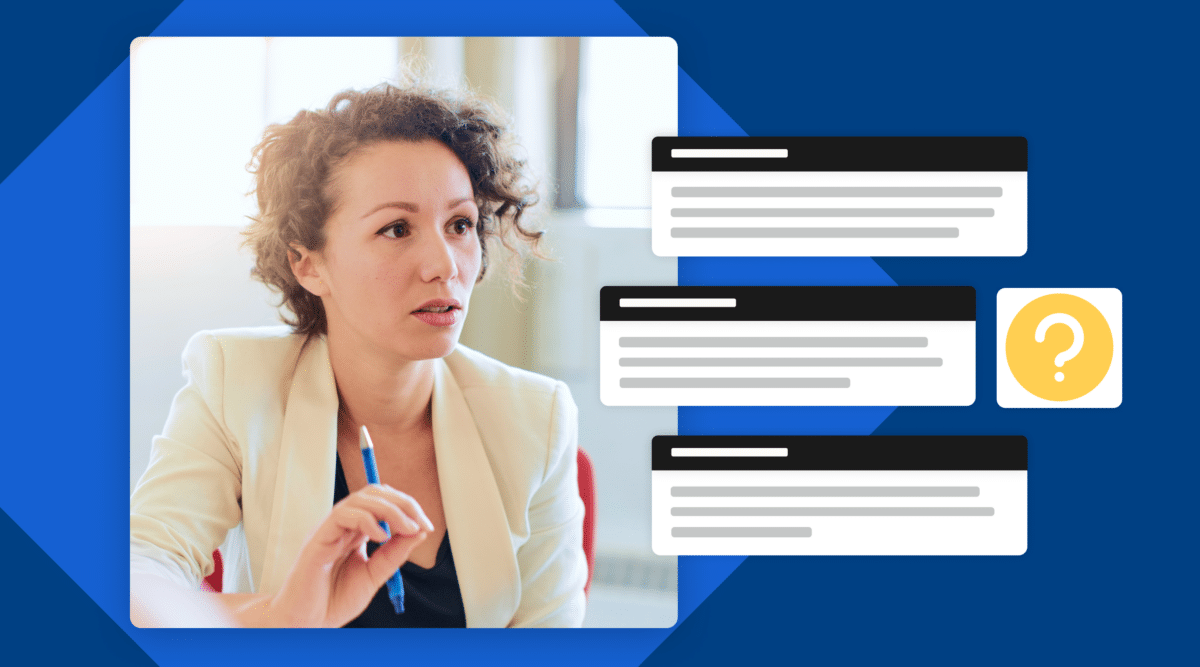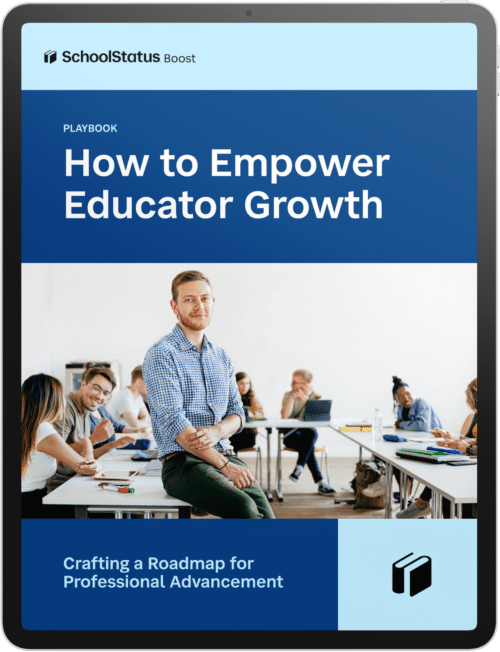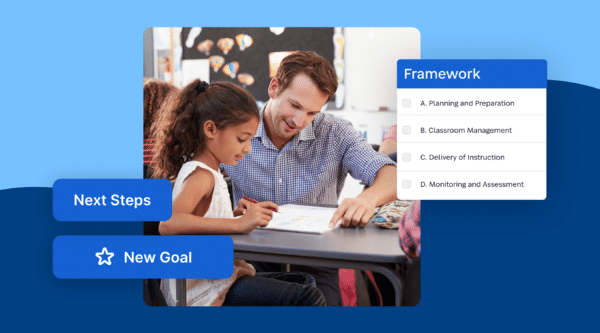

Allison Peterson, IC at Westminster Academy and founder of the #NewtoCoaching Community, shows how to use Michael Bungay Stainer’s 7 Essential Questions to guide your coaching conversations.
Whether you’re a new instructional coach or a seasoned pro, new coaching conversations are always difficult to start. Almost immediately, someone will tell you to “do coaching cycles,” but they probably don’t spend much time training you in what coaching cycles are, what to achieve during them, or how to enroll teachers.
If you find yourself saying, “That sounds like my situation, Allison!” then you’re not alone. Let me help you work your way towards an intentional coaching cycle by using the 7 “Essential Coaching Questions” from Michael Bungay Stainer’s book, The Coaching Habit.
The Process
When a teacher comes to you with a problem, it’s normal to immediately give them a solution. However, we should replace this urge with a questioning strategy. There are 2 really good reasons for doing this:
- The teacher gains more ownership of the solution, since they thought of it themself
- Your idea, although probably a great one, could not be the right solution for them. No two brains are alike. Just because it makes sense to you, doesn’t mean it will make sense for them
So instead of simply providing a solution, try asking one of the following questions to encourage further thinking and conversation:
1) What’s on your mind?
This question has a unique way of cutting through small talk, and helps to narrow the conversation to what’s actually important.
If you’re trying to work towards a coaching cycle with a teacher, but you haven’t been able to break through the chit-chat, ask them, “So what’s been on your mind about your class lately?” See if that breaks the ice enough for you to begin a coaching conversation.
2) And what else?
This question is meant for expansion, getting the teacher talking even more so they share further thoughts and ideas. Michael Bungay Stanier claims this is the “best coaching question in the world” because it also has the power to make you more curious and less quick to rush into giving advice or providing solutions
Asking “And what else have you been thinking about your students?” invites the teacher to share more concerns and worries with you. Once this happens, you have more to coach on. It may still be too early for a coaching cycle, but now you’re getting somewhere.
Let’s imagine that this teacher told you about a student they are concerned with. The student is behind and hasn’t been able to catch up. The teacher doesn’t know how to help. Now we can ask…
3) What’s the real challenge here for you?
Now that you have a starting point—a student who is behind—Michael Bungay Stanier would recommend that you ask: “What’s the real challenge here for you?” and wait to give them plenty of time to reflect.
After the brief pause, the teacher may answer the question with a response that could sound something like: “Well, I just don’t know how to get them to turn in their work!”
4) What do you want?
This is your first breakthrough with the teacher, so now try asking, “What do you want?” This usually enters the conversation naturally because the teacher probably already told you what they tried so far to solve this problem—e.g., called the students’ family or talked to them one-on-one.
You may be tempted to give advice here and tell the teacher what to do with this student. BUT WAIT! Instead of jumping in with your solution, ask the teacher: “What do you want to do next with this student?” Or perhaps: “What do you want the next step to be with this student?” The teacher’s answer may surprise you, and it may diverge from the first thing you were going to suggest. The teacher will devise a solution that aligns with their understanding, based on the series of interactions and support they have already provided to this student.
Now, even if the teacher’s solution is far from what you would recommend they do, stick with it and let them own their solution to the problem. If it seems like the wrong direction, don’t panic—you will have time to coach further.

Empowering Educator Growth
Nurturing the growth of educators is critical to enhancing student achievement and success.
Download Now5) How can I help?
Of course you want to offer help, but again it needs to be help that is relevant and appropriate for the situation. If you start guessing what that would be, you are taking shots in the dark. Let the teacher decide how they envision the solution.
When you say “How can I help you?,” you’re doing two important things:
- Letting the teacher invite you into the situation as a partner
- Communicating to the teacher that you are available and willing to help—maybe they hadn’t considered you as a resource previously
Based on their answer, you can find a time to follow up and provide specific support on this issue. You can schedule a time to meet and work with the teacher on a new strategy, or visit their classroom to give feedback. There are all sorts of directions you can take from here because you’ve just opened the door to coaching with this teacher. All you have to do is step inside.
The last two questions are essential to use for future conversations with this teacher:
6) What are you saying “no” to?
This question is about clearing space for new things by removing old ones. You can use this question with a teacher who is trying a new strategy but may feel overwhelmed by maintaining old systems as they add a new layer.
When you sense this happening with a teacher, you can ask: “If you are saying yes to this, what are you saying no to?” The question may surprise them and give the permission they need to let something go to make space for the new idea or strategy in the classroom. You can also ask a variation of this question: “What can you remove so you can make room for this?”
Pro tip: Teachers need permission to let something go—something that they’ve been holding on to because they think they are “supposed to” do it—especially during the intense post-COVID teaching world. You can use this question to help teachers release old burdens and make their load a little lighter.
7) What’s most useful to you?
This question will transform your coaching, so start using it regularly. By asking the question, “What’s most useful to you?,” you drive reflection and intentional learning with the teacher. It also provides a learning opportunity for both of you.
After asking this question at the end of a PLC, PD, or meeting, the teacher will be able to reflect on their learning and grasp something specific that was useful to take back to the classroom. As the coach, you also get the chance to learn a little more about this teacher and how they think. When you have a better grasp of how each teacher thinks and processes information, you can better support them.
This question is also a bridging question—it can help you bridge from one coaching conversation to the next. If you collect the answers to this question in a Google form, for instance, you now have a list of how to follow up in your next coaching conversation.
Final Note
By asking Michael Bungay Stanier’s 7 “Essential Coaching Questions,” you can turn every conversation into a coaching conversation. Using these questions can open the doors to future meetings. You now have a coaching cycle!
About Our Guest Blogger
Allison Petersen is the founder of the #NewtoCoaching Community where new instructional coaches can learn, connect, and be encouraged as they transition from the classroom to instructional coaching. In addition to training and supporting new coaches, Allison helps independent schools launch instructional coaching programs. She has been a K-12 instructional coach for 12+ years and is currently launching a coaching program at an independent school in South Florida. Be sure to follow Allison on Twitter @alcp!
Stay Connected
News, articles, and tips for meeting your district’s goals—delivered to your inbox.





